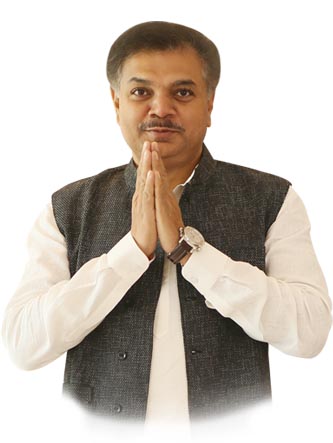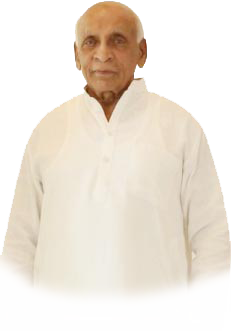Ranajgajitsinh Padmasinh Patil joined the Bharatiya Janata Party in the presence of Bharatiya Janata Party President Amit Shah and is the current MLA from Tuljapur in Maharashtra. He was the first and youngest minister to hold a cabinet position and subsequently became an MLC. In the 2019 assembly elections, he defeated former minister Madhukar Chavan on a BJP ticket by 24,000 votes.
He contributed to the foundation of the largest number of dams (“KT”) of the Kolhapur Dam Programs at Dharashiv. They have played a major role in making Osmanabad the most irrigated district in the otherwise backward and largely dry Marathwada region. He was Minister of State for Industries, Revenue, Agriculture, Cultural Affairs, Employment and Employment Guarantee Scheme, Parliamentary Affairs, GAD. He has held the responsibility of six departments in his first post as a minister.
His family has represented Dharashiv Legislative Assembly 10 times from 1978 to 2019 in the Maharashtra Legislative Assembly. His father Padmasinh Bajirao Patil was a minister in Maharashtra government for more than 20 years. He was the former Deputy Speaker of the Maharashtra Legislative Assembly, Leader of the Opposition, and State President of Sharad Pawar’s NCP (S). He is also representing Osmanabad for the last 40 years. His wife is the Vice President of Osmanabad Zilla Parishad.

Our Place of inspiration : Dr. Padmsinha Bajirao Patil

 Dr. Padmasinh Patil built most Kolhapuri dams in the drought-prone Dharashiv district. Most of the land in the district was brought under irrigation. His son Ranajgajitsinh Patil is also a politician and the sitting MLA from the Tuljapur constituency.
Dr. Padmasinh Patil built most Kolhapuri dams in the drought-prone Dharashiv district. Most of the land in the district was brought under irrigation. His son Ranajgajitsinh Patil is also a politician and the sitting MLA from the Tuljapur constituency.
The Patil family has dominated the district for the past 45 years. Zilla Parishad, Panchayat Samiti, Municipality, Gram Panchayat, and various societies have been dominated by the Patil family. Even today, his panel under the leadership of Patil has won the elections of various local bodies. The third generation of Dr. Padmasinh Patil has become active in politics. His grandson Mr.Malhar Patil has become active in district politics.
Dharashiv district, which is mainly dependent on agriculture, is constantly exposed to unfavorable natural conditions due to its geographical structure. Farmers here are always in financial crisis due to natural calamities. The district became independent 1 year after the independence of the country. When it was a combined district, the leadership was with Latur, so Dharashiv was not given much attention. Dharashiv district, which has done remarkable work in the center of the movement after independence, the birthplace of the farmers’ movement, the United Maharashtra Movement and the Marathwada Liberation War, is now gaining a reputation in all fields. Dharashiv district, which is known to be drought-prone, has been undergoing many changes for the last 4 decades. While there is no such big river in the district, the shape of the district has been shaped with great effort by avoiding the natural calamities that are constantly happening due to the geographical structure. Dr. Padmasinh Patil has a lion’s share in it.
Dr. Padmasinh Bajirao Patil became a minister for the first time in 1978. Since agriculture is the main source of livelihood of the citizens of the district, they initially focused on creating agricultural infrastructure. In 1988, when he got charge of the Irrigation Department, he made conscious efforts to increase the irrigation area of the district as there were few irrigation facilities. At the time he took charge, there were 58 irrigation projects in the district and only 32,315 acres were under irrigation, of which 2000 hectares were orchards. He had an irrigation account for 10 years. Doctor Saheb used his position to help the farmer brothers of his area and used the largest amount of funds from the Irrigation Department for Dharashiv district. Often in the cabinet meetings, other ministers used to express displeasure with the then chief minister as the largest amount of funds of the irrigation department was being spent only on Dharashiv district.
Due to the tremendous work done by Saheb, the number of irrigation projects in the district went directly from 58 to 1,248 while the irrigated area of the district increased significantly from 4% to 21%. With the increase in irrigation capacity, 36,09,430 acres of land came under irrigation and orchards increased from 2000 hectares to 32,000 hectares. When there is good rain, sugarcane is cultivated in large quantities and the farmers get more than 1000 crores from all the agricultural crops. Due to increase in sugarcane area, 16 sugar mills have been established in Dharashiv district which is called drought-stricken. Marathwada produces the highest sugarcane in Dharashiv district when there is satisfactory rainfall.
After the increase in irrigation, he pursued that dream day and night with the goal of creating a network of roads and electricity all over the district. Recognizing the need for future water, he staked his political supremacy and got approval for a major 21 TMC water project in the Krishna basin in 2004. This project is the beginning of many future dreams. Along with agriculture, communication facilities were very necessary to speed up industrialization, so the pursuit was started. By detouring about 20 km, the railway line was brought closer to the city of Dharashiv. This railway is the only example in the country to have made such a big detour leaving the existing route. Dr. Saheb’s efforts to make the dream a reality are beyond words.
Approval of reservation in Ujani Dam to provide water to Dharashiv city, establishment of Ayurvedic College, Engineering College, Tannariketan College, sub-center of Dr. Babasaheb Ambedkar Marathwada University for higher education facilities in the district for students who have studied from rural areas or construction of Agriculture College. Also undoubtedly goes to Doctor Saheb.
Be it the earthquake that happened in Dharashiv-Latur or the natural calamities that occurred after that, many people still remember with tears in their eyes the efforts made by Saheb by taking the ordinary workers with them, forgetting all about honor, honor, position and prestige. Saheb has spent 40 years of his life erasing the stamp of drought cycle on the front of Marathwada and Dharashiv district.
Positions held
- 2004-2009 State Minister Industries, Revenue, Agriculture, Cultural Affairs, Protocol, Employment and Employment with guarantee scheme, Parliamentary Affairs, General Administration.
- 1st Term: 2004-2008 Member of the Maharashtra Legislative Council (“MLC”)
- 2nd Term: 2008-2014 Member of the Maharashtra Legislative Council (“MLC”)
- 3rd Term: 2014-2019 Member of the Maharashtra Legislative Assembly (“MLA”) Osmanabad Vidhan Sabha
- 4th Term: 2019-Incumbent Member of the Maharashtra Legislative Assembly (“MLA”) Tuljapur Vidhan Sabha






